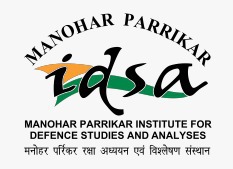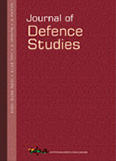Mathematical Conceptualisation of Shooting Down a Drone/Helicopter
The objective of this commentary is to determine several parameters of the shooting down of slow flying objects.1 If we have some basic information regarding the motion of the drone/helicopter and we also know the velocity with which the bullet will be discharged, then we may evaluate the angle of projection (a) so that the bullet will shoot down the drone/helicopter even if it has manoeuvring effect due to acceleration or retardation. Obviously, the conclusions of the commentary will also hold if any other objects in the air replace the drone/helicopter.
- Neeraj Pant , Satyanarayana Gedela |
- October-December 2022 |
- Journal of Defence Studies




